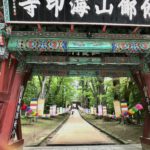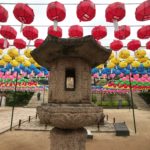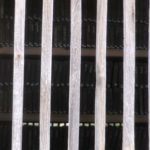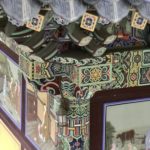Daegu
A 90 minute local bus trip took us from Daegu up into the mountains of Gayasan National Park where the Haeinsa Temple complex is located.
A UNESCO World Heritage Site, the temple contains a number of national treasures, including a three-story stone pagoda, a stone lantern, paintings of Buddha and other figures, and the oldest known wooden statutes of Buddha in Korea. But, Haeinsa’s most famous national treasure is the Tripitaka Koreana (the Goryeo Buddhist canon). The Tripitaka, which represents the three divisions of Buddhism: the Sutra (scriptures), Vinaya (laws) and the Abhidharma (treatises), has been preserved on more than 80,000 carved woodblocks, which took 16 years to complete. According to our “Smart Tour Guide” app, it is believed that for the 11 th century Korean Buddhists, “the project of carving the Buddhist scriptures was their only defense to protect their country against a formidable enemy via their spiritual and cultural superiority”.
After the first set was destroyed by Mongol invaders in 1232, a reconstructed set was completed in 1251. From carefully selecting appropriate wood from wild cherry or Korean pear trees, then soaking it in brine and boiling it in salt before drying it, to locating and constructing a sophisticated repository, the techniques involved are complex and the artwork intricate. The woodblocks are housed and preserved in a 15th-century hall which, due to it’s ingenuity, also has UNESCO World Heritage designation. We could see the carved texts through wooden slats in the building.
In September 1951, North Korean soldiers were conducting guerilla warfare in the Haeinsa area. UN forces were ordered to bomb Haeinsa but Kim Young Hwan, the leader of the Air Force’s pilots, worried about the loss of the Haeinsa Tripiṭaka Koreana, did not obey the command.
Lunch:










